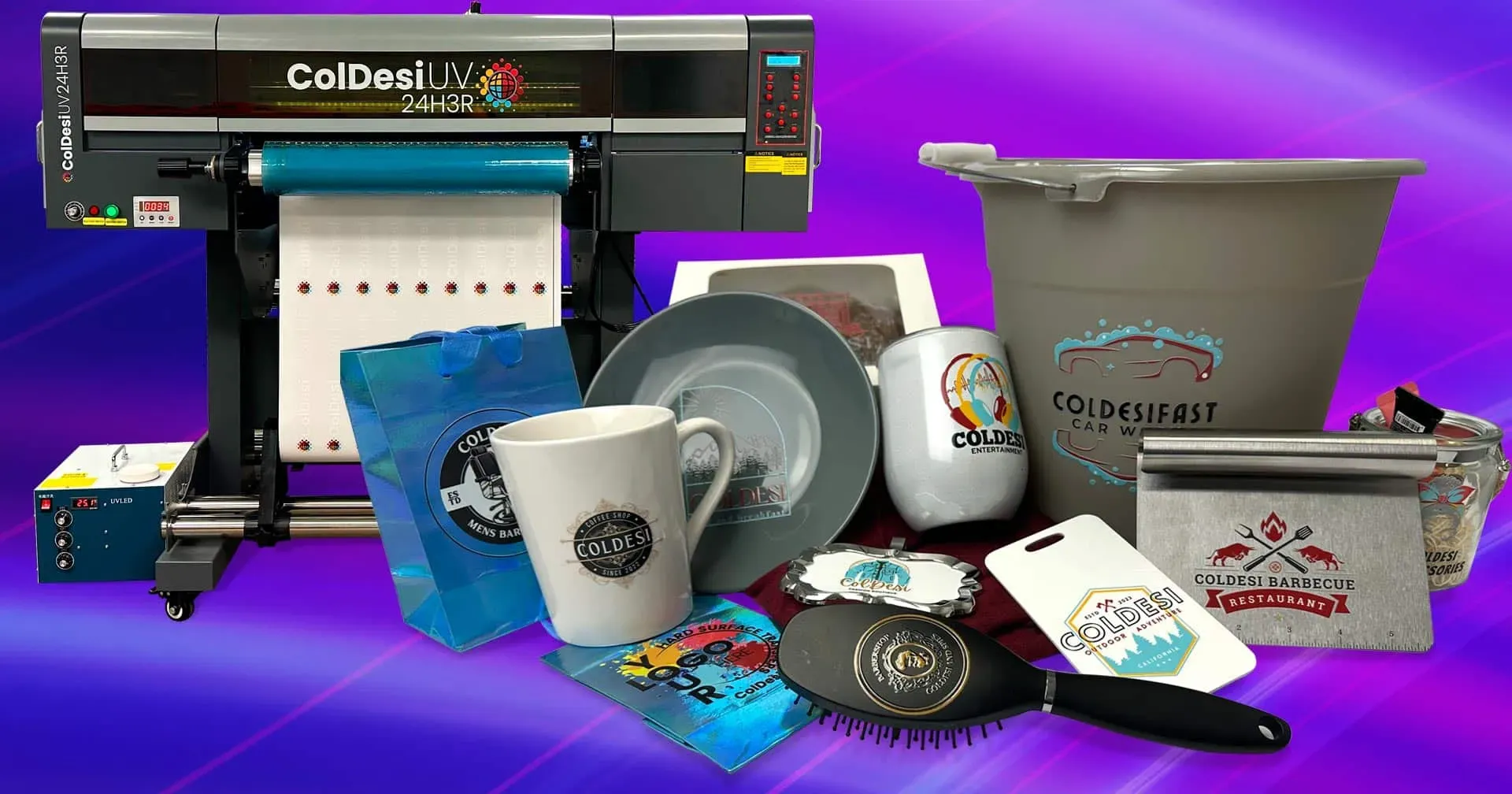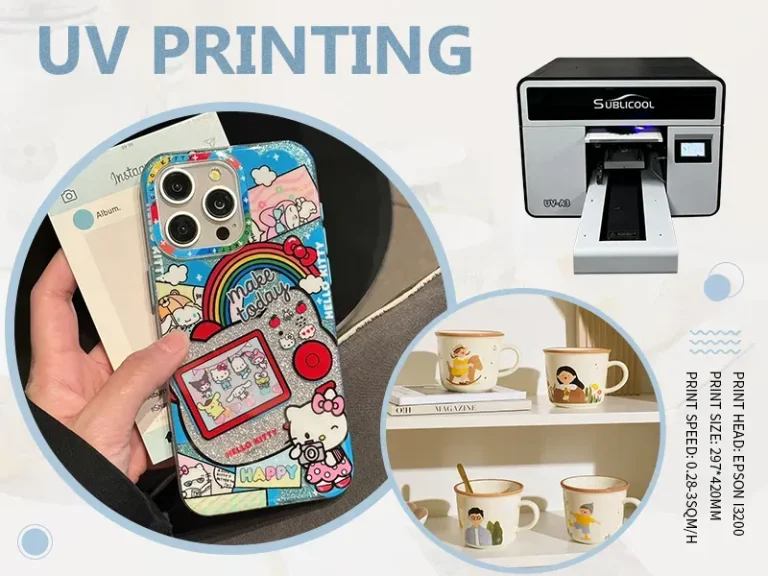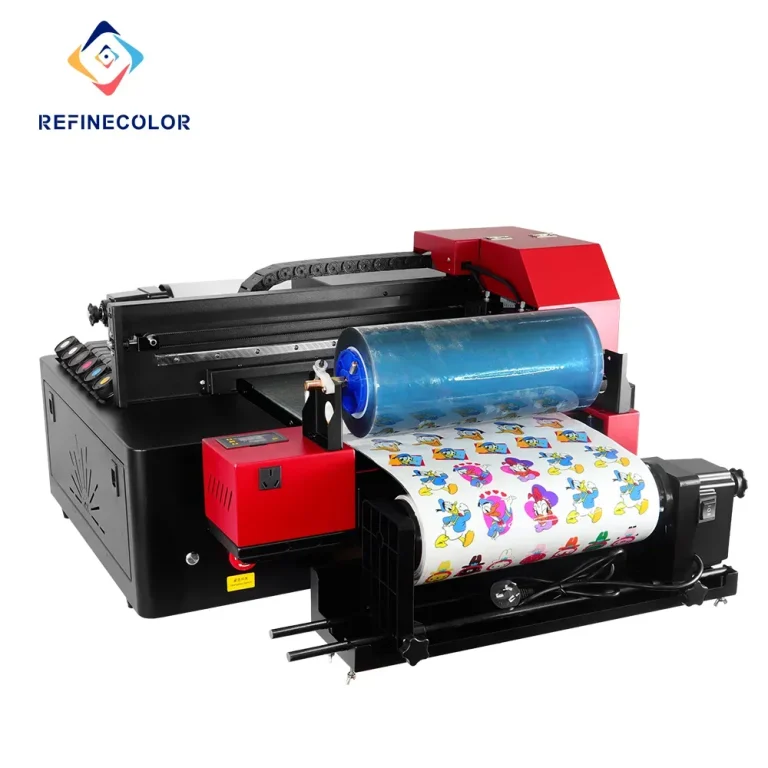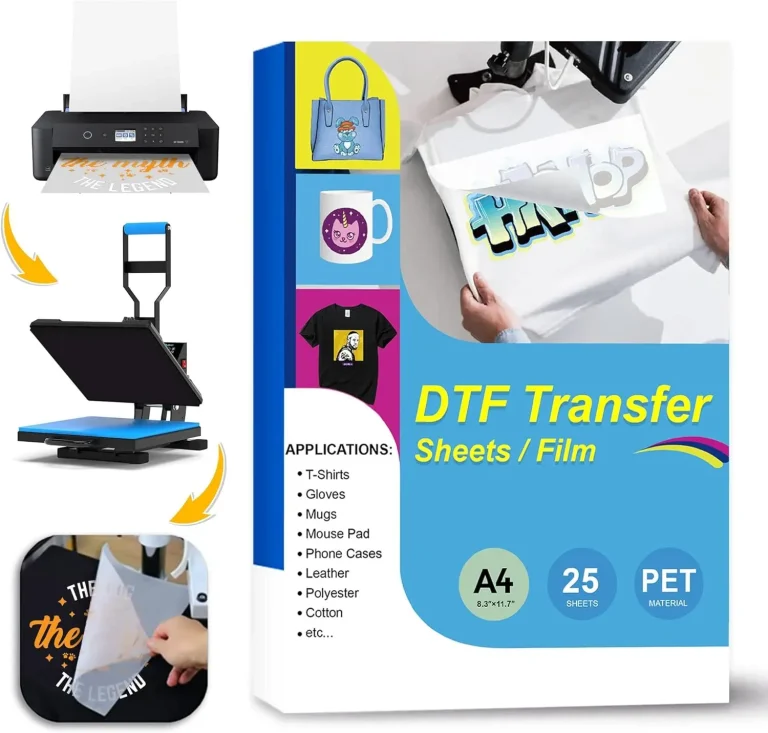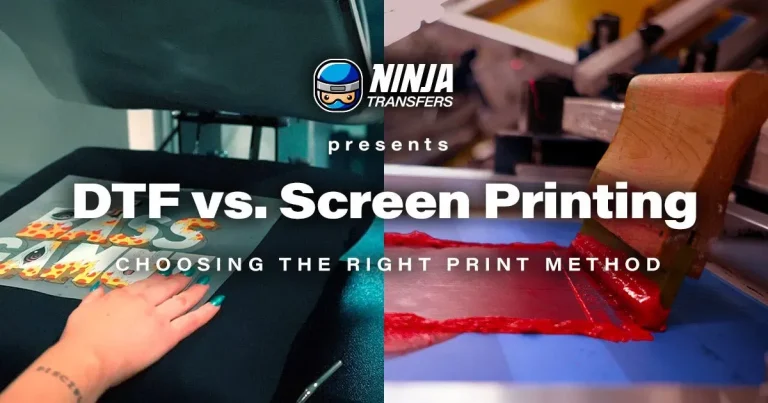UV DTF Printing: The Future of Print Technology Unveiled
In the rapidly evolving world of printing, **UV DTF printing** emerges as a revolutionary technique that transforms how images are transferred onto various materials. This cutting-edge method, known for its use of ultraviolet light to cure inks onto films, is reshaping the landscape of print technology. With significant advancements in **UV printing technologies**, businesses can now take advantage of the **benefits of UV DTF**, including quick drying times and vibrant color reproduction. This innovative approach not only ensures high-quality prints but also caters to a wide range of substrates, making it a versatile choice for industries like fashion and signage. As we explore further, it’s clear that the future of print technology is closely intertwined with the advancements made in UV DTF printing.
As we delve into the innovative realm of UV Direct to Film printing, it’s essential to understand how this methodology is redefining production in the print industry. This form of Direct to Film printing leverages advanced ultraviolet techniques to cure inks, allowing for a seamless transfer of stunning designs onto various surfaces. The evolution of **UV DTF technology** underscores the remarkable capabilities of modern printing solutions, offering unprecedented efficiency and environmental benefits. With businesses increasingly recognizing the potential of this advanced method, it opens up exciting avenues for creativity and customization. By embracing such innovations, companies not only enhance their operational efficiency but also meet the rising market demand for high-quality, personalized printed products.
Understanding UV DTF Technology
UV DTF printing, or UV Direct to Film printing, is revolutionizing how we approach design and production within the printing sector. This technology employs ultraviolet light to cure high-quality inks onto a specialized film before transferring the image onto various substrates. Such an innovative approach differentiates it from its predecessors, which often depend on slow-drying methods and solvent-based inks. The rapid curing process ensures that colors remain vibrant and true-to-life, allowing for intricate designs and details to be highlighted effectively.
This technology advances traditional printing techniques, primarily through its user-friendly interface and efficiency. Unlike older methods, UV DTF requires minimal setup and offers straightforward adjustments for different materials such as textiles, metal, and plastics. This adaptability not only appeals to printers but also to businesses looking for dynamic solutions that meet varied consumer demands.
Benefits of UV DTF Printing
The most prominent advantage of UV DTF printing is its ability to produce remarkable quality prints with vivid colors and precision detail. This technology’s UV-cured inks create a robust bond with various surfaces without the issues usually tied to traditional inks, such as fading or smudging. As a result, the end products have a professional appearance and longevity that can significantly enhance a brand’s reputation.
Moreover, the eco-friendliness of UV DTF printing cannot be overlooked. Manufacturers utilize inks with lower volatile organic compound (VOC) levels, aligning with global efforts towards environmental sustainability. Businesses can effectively communicate their commitment to eco-friendly practices through their choice of printing technology, making UV DTF not just a practical option but a socially responsible one.
Recent Innovations in UV DTF Technology
Recent advancements in UV DTF technology showcase a commitment to enhancing both functionality and versatility. Manufacturers are continually developing new ink formulations and print head technologies that streamline the printing process, enhancing the overall user experience. These innovations enable printers to achieve high-resolution prints on both rigid and flexible materials seamlessly, catering to a broader range of applications than ever before.
Additionally, integrated UV DTF systems are emerging, allowing businesses to incorporate this technology into their existing production lines without needing substantial upgrades. By facilitating a smoother transition to UV DTF printing, these innovations lower the barriers for adoption, ensuring that more companies can leverage the advantages of this cutting-edge technology.
Market Trends in UV DTF Printing
As reported by leading market research firms, such as Grand View Research, the UV DTF printing market is on an upward trajectory, driven by increasing demand for customized products across industries. Personalized products are becoming crucial for attracting customers, and UV DTF technology greatly enhances the ability to deliver high-quality, tailored goods rapidly. This trend illustrates a significant shift towards more efficient and flexible printing methods.
Moreover, as more businesses recognize the advantages of UV DTF technology, traditional printing methods are gradually yielding to more advanced techniques. Insights reveal that companies adopting this innovation can vastly improve turnaround times and production capabilities, ultimately leading to increased market competitiveness. The trend towards digital printing solutions emphasizes the critical importance of staying abreast of market shifts in print technology.
The Future of Print Technology with UV DTF
Looking ahead, UV DTF printing is poised to be a dominant force within the print industry due to its cutting-edge capabilities. As technologies evolve, ongoing improvements in efficiency, quality, and sustainability will ensure that UV DTF remains an attractive option for businesses. Innovations in printing technology tend to align closely with developments in consumer preferences, and as demand for rapid, personalized goods escalates, UV DTF will undoubtedly be at the forefront.
The promising future of print technology also suggests that UV DTF will integrate even more with digital platforms, enabling seamless workflows that enhance productivity. Companies that embrace these advancements early will position themselves advantageously, adapting quickly to the shifting landscape of consumer demands and technological capabilities.
Why Choose UV DTF for Your Printing Needs
Choosing UV DTF printing over traditional methods offers a plethora of benefits that can fundamentally transform a printing operation. From its ability to produce striking images with deep color saturation to its capacity to adhere to various substrates, UV DTF stands out as a versatile and efficient solution for modern printing needs. This technology not only meets high standards for quality but also provides flexibility catering to diverse industries ranging from fashion to promotional goods.
Moreover, the operational efficiencies gained through UV DTF technology can lead to cost-saving benefits for businesses. With reduced ink wastage and faster drying times, companies can maximize their output while minimizing labor costs, thus improving overall profitability. As print technology continues to advance, embracing UV DTF will help businesses thrive and remain relevant in a competitive marketplace.
Frequently Asked Questions
What is UV DTF printing and how does it work?
UV DTF printing, or UV Direct to Film printing, is an advanced printing process that uses ultraviolet light to cure specially formulated inks onto a film. This film is then transferred to various substrates, allowing for high-quality, vibrant images that can adhere to materials such as plastics, textiles, and metals.
What are the benefits of UV DTF technology compared to traditional printing?
The benefits of UV DTF technology include vivid color reproduction, high detail prints, versatility across diverse substrates, an eco-friendly profile with lower VOC emissions, and significantly faster printing efficiency due to instant ink curing.
Can UV DTF printing be applied to all types of materials?
Yes, UV DTF printing is highly versatile and can be effectively applied to a wide range of materials, making it ideal for industries like fashion, signage, and packaging, where different substrates are frequently used.
How has UV printing technology advanced in recent years?
UV printing advancements encompass improvements in ink formulations and print head technologies, enabling better adjustments for both rigid and flexible materials as well as achieving higher resolution outputs, making the UV DTF process more efficient and adaptable.
What trends are shaping the future of UV DTF printing technology?
Trends shaping the future of UV DTF printing include a growing demand for personalized products, increasing adoption by businesses of all sizes, and the integration of UV DTF technology into existing print production systems for enhanced capabilities and cost efficiency.
Why is UV DTF printing considered an eco-friendly printing solution?
UV DTF printing is regarded as an eco-friendly solution due to its lower concentration of volatile organic compounds (VOCs) compared to traditional inks, making it a more sustainable option for businesses that prioritize environmental responsibility in their production processes.
| Key Point | Description |
|---|---|
| What is UV DTF Printing? | A modern printing method that uses UV light to cure inks onto film before applying to various substrates, offering vibrant colors and versatility. |
| Advantages of UV DTF Printing | 1. Vivid colors and high detail 2. Versatile across substrates 3. Eco-friendly choice 4. Increased efficiency due to fast curing times |
| Recent Innovations in UV DTF Printing | Continual enhancements in ink formulations and print head technologies, integrating UV DTF within existing printing systems for seamless adoption. |
| Market Trends and Adoption | Projected exponential growth driven by demand for personalized products and efficient turnaround times, shifting from traditional printing methods. |
Summary
UV DTF Printing is revolutionizing the print industry with its innovative technology and array of benefits. This advanced method not only enhances operational efficiency and product quality but also offers environmentally friendly options with its low VOC emissions. As more businesses recognize the remarkable capabilities of UV DTF printing, the market dynamics shift toward rapid adoption, showcasing a future where high-quality, personalized prints are readily achievable. The ongoing advancements in this technology position UV DTF printing as a frontrunner, promising to redefine the standards of print production in various sectors.

